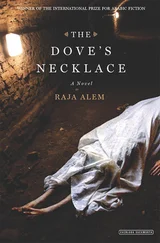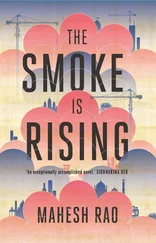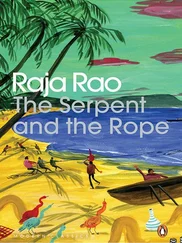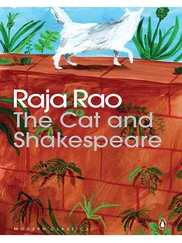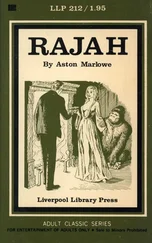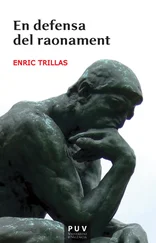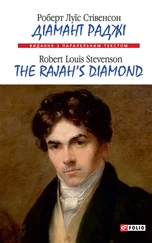The English language does not have sufficiently deep roots in India. It is therefore important for the writer to find his own individual style through which to express his world view. The reader, on his part, if he is not to misread the text, must get to know the writer’s epistemological viewpoint, or the sum total of beliefs, preconceptions and values which the writer shares with others within a sociocultural context.
R. Parathasarathy
Saratoga Springs, New York
15 January 2014
There is no village in India, however mean, that has not a rich sthala-purana, or legendary history, of its own. Some god or godlike hero has passed by the village — Rama might have rested under this pipal tree, Sita might have dried her clothes, after her bath, on this yellow stone, or the Mahatma himself, on one of his many pilgrimages through the country, might have slept in this hut, the low one, by the village gate. In this way the past mingles with the present, and the gods mingle with men to make the repertory of your grandmother always bright. One such story from the contemporary annals of a village I have tried to tell.
The telling has not been easy. One has to convey in a language that is not one’s own the spirit that is one’s own. One has to convey the various shades and omissions of a certain thought-movement that looks maltreated in an alien language. I use the word ‘alien,’ yet English is not really an alien language to us. It is the language of our intellectual make-up — like Sanskrit or Persian was before — but not of our emotional make-up. We are all instinctively bilingual, many of us writing in our own language and in English. We cannot write like the English. We should not. We cannot write only as Indians. We have grown to look at the large world as part of us. Our method of expression therefore has to be a dialect which will some day prove to be as distinctive and colorful as the Irish or the American. Time alone will justify it.
After language the next problem is that of style. The tempo of Indian life must be infused into our English expression, even as the tempo of American or Irish life has gone into the making of theirs. We, in India, think quickly, we talk quickly, and when we move we move quickly. There must be something in the sun of India that makes us rush and tumble and run on. And our paths are paths interminable. The Mahabharata has 214,778 verses and the Ramayana 48,000. The puranas are endless and innumerable. We have neither punctuation nor the treacherous ‘ats’ and ‘ons’ to bother us — we tell one interminable tale. Episode follows episode, and when our thoughts stop our breath stops, and we move on to another thought. This was and still is the ordinary style of our storytelling. I have tried to follow it myself in this story.
It may have been told of an evening, when as the dusk falls, and through the sudden quiet, lights leap up in house after house, and stretching her bedding on the veranda, a grandmother might have told you, newcomer, the sad tale of her village.
Our village — I don’t think you have ever heard about it— Kanthapura is its name, and it is in the province of Kara.
High on the Ghats is it, high up the steep mountains that face the cool Arabian seas, up the Malabar coast is it, up Mangalore and Puttur and many a centre of cardamom and coffee, rice and sugar cane. Roads, narrow, dusty, rut-covered roads, wind through the forest of teak and of jack, of sandal and of sal, and hanging over bellowing gorges and leaping over elephant-haunted valleys, they turn now to the left and now to the right and bring you through the Alambe and Champa and Mena and Kola passes into the great granaries of trade. There, on the blue waters, they say, our carted cardamoms and coffee get into the ships the Red-men bring, and, so they say, they go across the seven oceans into the countries where our rulers live.
Cart after cart groans through the roads of Kanthapura, and on many a night, before the eyes are shut, the last lights we see are those of the train of carts, and the last voice we hear is that of the cartman who sings through the hollows of the night. The carts pass through the main street and through the Potters’ lane, and then they turn by Chennayya’s pond, and up they go, up the passes into the morning that will rise over the sea. Sometimes when Rama Chetty or Subba Chetty has merchandise, the carts stop and there are greetings, and in every house we can hear Subba Chetty’s 350-rupee bulls ringing their bells as they get under the yoke. ‘Ho,’ says Subba Chetty, ‘hé-ho,’ and the bulls shiver and start. The slow-moving carts begin to grind and to rumble, and then we hear the long harsh monotony of the carts’ axles through the darkness. And once they are on the other side of the Tippur hill the noise dies into the night and the soft hiss of the Himavathy rises into the air. Sometimes people say to themselves, the Goddess of the river plays through the night with the Goddess of the hill. Kenchamma is the mother of Himavathy. May the goddess bless us!
Kenchamma is our goddess. Great and bounteous is she. She killed a demon ages, ages ago, a demon that had come to demand our young sons as food and our young women as wives. Kenchamma came from the Heavens — it was the sage Tripura who had made penances to bring her down — and she waged such a battle and she fought so many a night that the blood soaked and soaked into the earth, and that is why the Kenchamma hill is all red. If not, tell me, sister, why should it be red only from the Tippur stream upwards, for a foot down on the other side of the stream you have mud, black and brown, but never red. Tell me, how could this happen, if it were not for Kenchamma and her battle? Thank heaven, not only did she slay the demon, but she even settled down among us, and this much I shall say, never has she failed us in our grief. If rains come not, you fall at her feet and say, ‘Kenchamma, goddess, you are not kind to us. Our fields are full of younglings and you have given us no water. Tell us, Kenchamma, why do you seek to make our stomachs burn?’ And Kenchamma, through the darkness of the temple sanctum, opens her eyes wide — oh! if only you could see her eyelids quicken and shiver! — and she smiles on you a smile such as you have never before beheld. You know what that means — that every night, when the doors are closed and the lights are put out, pat-pat-pat, the rain patters on the tiles, and many a peasant is heard to go into the fields, squelching through the gutter and mire. She has never failed us, I assure you, our Kenchamma.
Then there is the smallpox, and we vow that we shall walk the holy fire on the annual fair, and child after child gets better and better — and, but for that widow of a Satamma’s child, and the drunkard Dhirappa’s brother’s son, tell me, who ever has been taken away by smallpox? Then there was cholera. We gave a sari and a gold trinket to the goddess, and the goddess never touched those that are to live — as for the old ones, they would have died one way or the other anyway. Of course you will tell me that young Sankamma, Barber Channav’s wife, died of it. But then it was not for nothing her child was born ten months and four days after he was dead. Ten months and four days, I tell you! Such whores always die untimely. Ramappa and Subbanna, you see, they got it in town and our goddess could do nothing. She is the Goddess of Kanthapura, not of Talassana. They ought to have stayed in Talassana and gone to Goddess Talassanamma to offer their prayers.
‘O Kenchamma! Protect us always like this through famine and disease, death and despair. O most high and bounteous! We shall offer you our first rice and our first fruit, and we shall offer you saris and bodice-cloth for every birth and marriage, we shall wake thinking of you, sleep prostrating before you, Kenchamma, and through the harvest night shall we dance before you, the fire in the middle and the horns about us, we shall sing and sing and sing, clap our hands and sing:
Читать дальше

